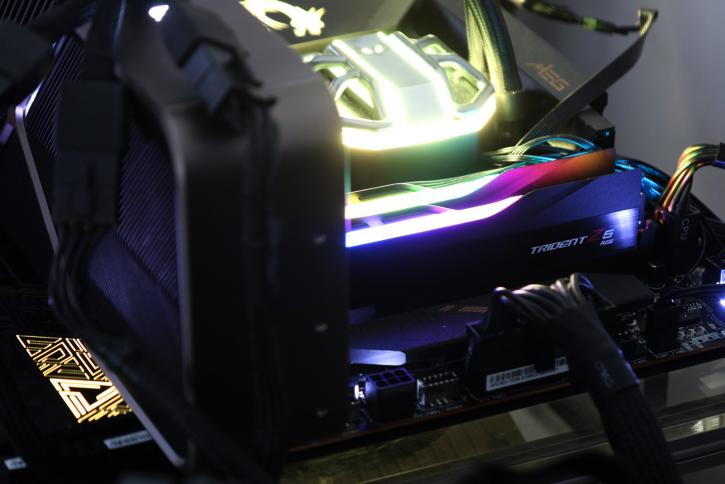Introduction
G.Skill Trident Z5 RGB 6800 MHz CL34 32GB DDR5 review
Expensive, Yet Unparalleled in Its Field
In this review, we take a closer look at the G.Skill TridentZ 5 RGB DDR5 memory kit, which boasts a high clock speed of 6800 MHz and a low latency of CL34. We tested the kit on Raptor-Lake, Intel's 13th generation processors, and compared its performance at DDR5 4800, 6000, and 7200 MHz. Our results provide an in-depth analysis of the performance differential between these different frequency and latency settings on the latest Intel processors. Overall, the G.Skill TridentZ 5 RGB DDR5 memory kit is an impressive option for those looking for high-performance memory with low latency and stunning RGB lighting.
Even though DDR5 has many advantages, the new memory standard got off to a shaky start. DDR5's introduction coincided with a worldwide semiconductor scarcity, which increased prices and slowed its uptake. While DDR5 is still not quite where it needs to be, but the recent release of G.Skill's Trident Z5 RGB DDR5-6800 C34 memory kit is encouraging as prices came down as well. As of right now, you can purchase this kit from the price of $299.99. DDR5 comes with new features like a Power Management Integrated Circuit, often known as a PMIC, which controls voltage changes. This effectively allows the DDR5 module to take over energy management and lessen the demand placed on the motherboard controller. Compared to DDR4, the nominal DDR5 voltage is 1.1 V, but the normal DDR4 voltage is 1.2 V., And while DDR4 is typically 1.35V XMP, it can be as high as 1.45V in some instances. Regarding the XMP voltage, DDR5 is most likely using 1.25V. Talking XMP, DDR5 also introduced XMP 3.0, an update to the previous version. Raising the number of profiles from 3 to 5 makes it possible to fine-tune the system. Depending on the configuration, this could imply three profiles for manufacturer settings and even two placeholders for users to save their profiles.
We all expected massive performance improvements from DDR5 memory. As it turns out, that's not entirely the case. If you are purchasing a new system, it may be worthwhile to purchase DDR5 memory; however, it is expensive compared to 4800 MT/s, so you need to pick wisely and likely cost-effectively. The kit today passes 300 EUR at 9.4 EUR per GB. Our setup will be based on the sweet spot configurations; DDR5 5200 Mhz, 6000 MHz, 7200 CL34 kit and thus the tested 6800 MHz CL34 kit from G.Skill (2x 16GB).


